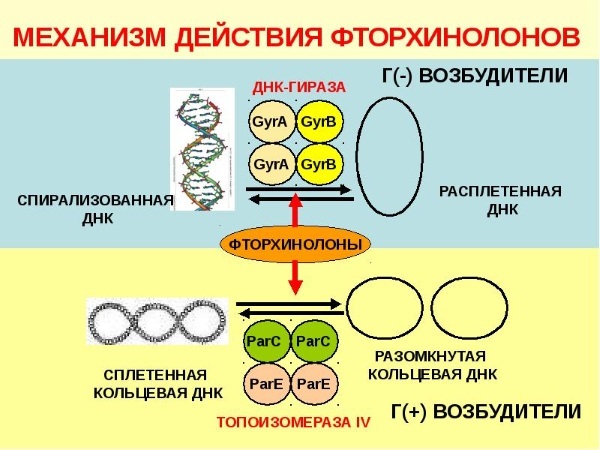Despite the intensive development of medicine in our time, humanity has not ceased to be completely ill from this. Moreover, some eye diseases are so dangerous that their treatment requires use special eye ointments with an antibiotic.
With the help of antibacterial pharmacological agents, such infections and inflammations of the eyes are successfully treated today, such as:
- Barley.
- Conjunctivitis.
- Ulceration of the cornea.
- Blepharitis
- Keratitis.
At the same time, it is extremely important to determine exactly which pathogen caused the pathology of the visual organs - this will subsequently allow you to choose the most optimal drug with an antibiotic, which will be able to make the treatment as fast and effective as possible and will not lead to a deterioration in the life of a person as a whole, because the eyes give him almost all the basic information about the environment the world.
Record content:
- 1 Classification
-
2 Top 10 drugs from the pharmacy
- 2.1 Tetracycline ointment
- 2.2 Ofloxacin
- 2.3 Floxal
- 2.4 Erythromycin
- 2.5 Hydrocortisone
- 2.6 Posiformin
- 2.7 Tobradex
- 2.8 Alfatex
- 2.9 Colbiocin
- 2.10 Tsiprolet
- 3 Video about eye ointments
Classification
General characteristics of the effect of existing antibiotic-containing eye ointments today, lies in the fact that they act strictly on the site of inflammation, where exactly they are applied, that is pointwise.
In addition, such drugs have a very high concentration of active active microelements, and this makes it possible to assert the desired and long-term bacteriostatic effect.
Thus, after the treatment of the inflamed surface with the drug, an environment is created that is unfavorable for the further formation of pathogenic microflora and, as a result, the course of the disease is extinguished.

Antibiotic eye ointments are of the following types:
- on an anhydrous hydrophobic basis;
- no hydrophilic base;
- on an emulsion basis.
At the same time, over other ophthalmic preparations, ointments have such unambiguous advantages:
- the possibility of applying only to the required area of inflammation;
- thick consistency provides no side spreading effect;
- long exposure time, in contrast to drops;
- long absorption of the drug ensures the presence of a high concentration of antibacterial elements.
The main disadvantage of eye ointments is visual impairment in humans for a period of 10 to 30 minutes. However, this drawback is not too significant when the question of treating a number of serious ophthalmic diseases is very acute.
Top 10 drugs from the pharmacy
Antibiotic eye ointments actively suppress most types of known pathogenic bacteria and relieve existing inflammatory processes, restoring full health to a person. Among the best drugs for the treatment of eye diseases, there are several highly effective and fairly affordable drugs.
Tetracycline ointment
Indications for the use of this ophthalmic agent are such dangerous diseases as:
- Conjunctivitis.
- Blepharitis
- Trachoma.
- Keratitis.
The composition of 1 g of ointment contains 10,000 mcg of pure tetracycline. It is produced in tubes with a volume of 3.7 or 10 g.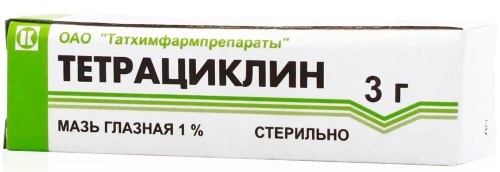
The pharmacological action of the drug is its fight against pathogenic microorganisms and the provision of a full-fledged bacteriostatic effect. However, in the case of viral conjunctivitis or the presence of a fungus, this ointment will be practically ineffective.
The drug is used according to the following scheme: it is placed behind the lower eyelid no more than 5 times a day.
The main contraindication to the use of the drug is human intolerance to tetracycline itself. A side effect of the drug is the occurrence of a local allergic reaction (burning in the eyes, swelling, itching). There were no episodes of ointment overdose. It is dispensed without a prescription. The cost of the drug is approximately 40 rubles. per packing.
Ofloxacin
An antibiotic eye ointment containing 3 mg of ofloxacin in 1 mg of its composition. Petrolatum, methyl parahydroxybenzoate and propyl parahydroxybenzoate are also used as additional substances.
Ofloxacin has a unique biological mechanism of bactericidal action, which manifests itself in a decrease in the activity of DNA gyrase, and this in turn stops DNA replication bacteria.
The indications for the use of the drug are:
- diseases of the eyelids of bacterial origin.
- dacryocystitis, meibomitis;
- eye infections caused by chlamydia;
- prevention after all sorts of surgical interventions in the visual organs (eye injuries, extraction of foreign bodies).
It is necessary to use the drug according to the following scheme:
- The lower eyelid of the diseased eye is carefully pulled back.
- 1 cm of ointment is injected into the conjunctival sac.
- Close the eye and rotate it to evenly distribute the drug inside.
This entire procedure is performed 2-3 times a day for a period of no more than 2 weeks.
As side effects of using the ointment can be:
- burning and discomfort in the eyes.
- dryness, itching, fear of light.
- active lacrimation.
Unambiguous contraindications to the use of the drug are:
- age up to 15 years.
- pregnancy and lactation.
- high sensitivity to the components of the ointment or their intolerance.
There is no data on drug overdose. It is recommended to start driving a car no earlier than 15-20 minutes after placing the ointment in the eyes. Ointment is sold without a prescription at a price of about 60 rubles.
Floxal
The drug serves to extinguish inflammation in the eyes caused by diseases such as:
- blepharitis;
- barley;
- corneal ulcer;
- keratitis;
- chlamydial pathogen.
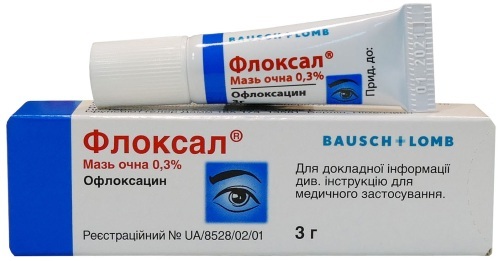
Eye ointment is placed inside the lower eyelid with a strip 1.5 cm long. The procedure is performed no more than 3 times a day. The course of treatment should not exceed 2 weeks. Allowed to use the parallel use of ointment and drops.
Floxal has a wide spectrum of action, which allows it to suppress gram-positive microorganisms.
Side effects of the drug can be:
- fear of light;
- discomfort in the eyes;
- dryness or, on the contrary, lacrimation;
- dizziness.
It is forbidden to use the drug for pregnant and lactating women, as well as for persons who have hypersensitivity to the components of the ointment.
Overdose cases of Floxal were not recorded. During its use, contact lenses are not allowed. The drug is sold by prescription. The price is in the range of 140 - 190 rubles.
Erythromycin
Eye ointment is yellowish (in some cases, yellowish brown) in color. Contains in its composition 0.01 g of erythromycin.
As additional substances used:
- petrolatum;
- anhydrous lanolin;
- sodium metabisulfite.
Erythromycin belongs to the macrolide group and is able to be absorbed directly into the cornea of the eye, as well as into the watery structure of this organ.
The drug is prescribed if a person suffers:
- blepharitis;
- meibomite;
- conjunctivitis;
- trachoma.
Persons suffering from renal or hepatic insufficiency should not use the drug. There are no clinical trials of the drug on its effects on pregnant and lactating women.
It is necessary to use the drug as follows: behind the eyelid of the diseased eye, it is necessary to lay a strip of ointment no more than 1.5 cm long. Moreover, this procedure is carried out 3 times a day. The duration of treatment depends on the specific disease and the severity of its course and therefore can range from 14 days to 4 months.
To combat trachoma, the agent is used 4-5 times a day with parallel opening of the follicles, and after the active inflammatory process has subsided, the treatment proceeds according to the standard scheme.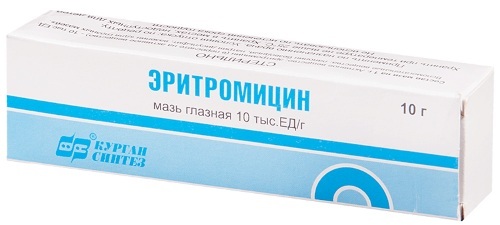
It is allowed to use a medicine for the prevention of blennorrhea in newborns. For this, the ointment is placed on the lower eyelid once a day.
An overdose of the drug has never been officially noted.
Side effects of the action of the ointment can be active lacrimation, impaired clarity of visual perception. The dispensing of the medicinal product is carried out through pharmacy chains with a prescription from a doctor. The cost is about 90 - 100 rubles.
Hydrocortisone
Ointment, which contains the following components:
- hydrocortisone acetate;
- methylparaben;
- soft, white paraffin.
The drug must be of a uniform consistency. By itself, it has the ability to reduce inflammatory cell infiltrates, reduces the migration of leukocytes and lymphocytes in the area of inflammation. Hydrocortisone is introduced into the epidermis and the epithelial layer of the mucous membrane.
A medicinal product is prescribed by a medical professional if the patient has:
- allergic conjunctivitis;
- iridocyclitis;
- keratitis;
- chemical burn;
- postoperative irritation.
Unambiguous contraindications for the use of the ointment can be:
- open glaucoma;
- fungal eye infections;
- tuberculosis of the eyes;
- ulcers and wounds of the cornea of the eye;
- viral diseases of the visual organs;
- intolerance to the components of the drug;
- violation of the integrity of the structure of the eyeball;
- the patient's age is less than 18 years.
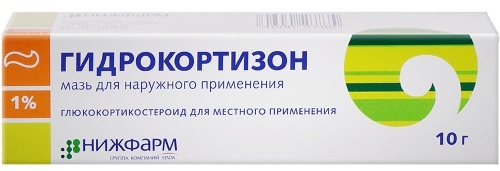
The study of the effect of the drug on pregnant and lactating women has not been carried out. There are no data on the penetration of glucocorteroids into breast milk. Eye ointment is used in place: it is placed in the conjunctival sac with a strip up to 2 cm long no more than 3 times a day.
Side effects of the drug:
- short-term visual impairment;
- an increase in eye pressure if treatment lasts more than 10 days;
- the formation of a subcapsular posterior cataract;
- a decrease in the rate of healing of wounds arising from thinning of the cornea;
- the occurrence of a fungal infection.
Overdose episodes are extremely rare and are manifested in the occurrence of local dose-dependent negative effects. In case of discontinuation of the use of the drug, the manifestations of overdose disappear on their own. The ointment is dispensed without a prescription in any pharmacy at a price of 30 rubles.
Posiformin
Eye ointments with an antibiotic, which is posiformin, are characterized by a broad antimicrobial effect. This preparation contains 20 mg of bibrocatol in 1 g of its composition, as well as lanolin and mineral oil.
The drug is prescribed to persons suffering from:
- nonspecific irritations of the outer shell of the eyeballs;
- chronic blepharitis;
- fresh uninfected corneal wounds.
Posiformin provokes the deposition of proteins that constrict the surface layers of tissues. Thus, a protective layer is formed, which helps prevent the penetration of pathogenic elements. This is made possible by the presence of bibrocatol, which is a specific bismuth compound endowed with astringent and antiseptic properties.
The main contraindications to the use of the medication:
- hypersensitivity of a person to the main or auxiliary components;
- age under 6 years old;
- wearing contact lenses during treatment.
An ointment is used according to the following scheme: a strip 0.5 cm long is inserted into the conjunctival sac or on the affected eyelid. The procedure is performed up to 5 times a day. For adults and children over 6 years of age, the dosage is the same. The period of use is up to 14 days.
Overdose is unlikely, since bibrocatol has a low degree of penetration through the biological membrane into the inside of the eye.
The use of the ointment by pregnant and lactating women is undesirable, since there is no exact data on the degree of effect of the drug on these categories of women. Posiformin is sold according to the prescription (prescription) of a healthcare professional. The cost of the drug is quite high - about 1900 rubles.
Tobradex
An antibiotic drug containing 3 mg of tobramycin and 1 mg of dexamethasone in 1 g of its composition. These eye ointments made in Belgium also contain anhydrous chlorobutanol, mineral oil, white soft paraffin.
The drug is prescribed when the patient has eye inflammation with a bacterial infection that is suppressed by blocking the ribosomes of harmful microorganisms, which reduces protein synthesis and vital activity pathogen.
Tobradex is prohibited for use when a person suffers:
- keratitis caused by the herpes simplex virus;
- viral infections of the cornea and conjunctivitis;
- fungal diseases of the eyes;
- microbacterial infections of the visual organs.
During pregnancy, the use of the ointment is also prohibited because there is a risk of intrauterine growth retardation. Tobradex is non-toxic even if accidentally swallowed. Excess ointment in the eye is simply washed off with water.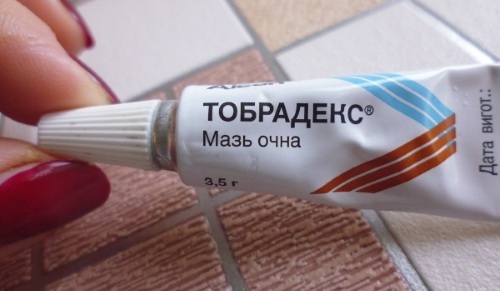
Side effects are often:
- burning and itching;
- swelling and lacrimation;
- erythema;
- increased intraocular pressure.
At the same time, these manifestations occur in only 1% of patients using a drug that is sold by pharmacists exclusively with a prescription. The price of the ointment is about 400 rubles.
Alfatex
Eye ointment containing the following main active ingredients:
- chloramphenicol;
- sodium colistimethate;
- tetracycline;
- betamethasone disodium phosphate.
The drug is prescribed to combat gram-positive and gram-negative bacteria, causative agents of various purulent infections, affects rickettsia, spirochetes, chlamydia. Also, the ointment has antifungal activity.
The drug is prescribed in cases of struggle against:
- conjunctivitis;
- keratitis;
- blepharitis;
- injuries and other lesions of the visual organs.
Alfatex is used 3-4 times a day. It is allowed to use it in conjunction with eye drops, which are buried in the morning, and the ointment is laid in this case in the afternoon.
Possible side effects:
- asthma attacks due to the presence of sodium sulfate in the composition of the ointment in people with heightened sensitivity to this substance;
- increased intraocular pressure;
- posterior subcapsular cataract.

Prohibitions for the use of the drug are:
- glaucoma;
- viral diseases of the cornea;
- tuberculosis of the eyes.
No cases of drug overdose have been identified. It is sold in pharmacies without a prescription at a price of about 2,000 rubles.
Colbiocin
Antibiotic eye ointments must be considered with Colbiocin, including, which contains:
- sodium colistimethate;
- chloramphenicol;
- tetracycline;
- vaseline oil;
- ophthalmic petroleum jelly.
This drug is a semi-solid liquid mass, which is prescribed for:
- conjunctivitis (catarrhal, purulent, trachoma);
- blepharitis;
- bacterial keratitis;
- septic ulcer of the cornea;
- blepharoconjunctivitis;
- dacryocystitis.
The ointment inhibits the synthesis of proteins of harmful microorganisms, is active against gram-positive and gram-negative bacteria.
The unambiguous prohibitions on the use of the medicinal product are:
- disturbances in the work of the kidneys and liver;
- pregnancy and lactation;
- age up to 8 years;
- intolerance to the components of the drug.
Colbtional side effects:
- burning in the eyes;
- hives;
- short-term conjunctival hyperemia;
- bone marrow hypoplasia due to prolonged local use.
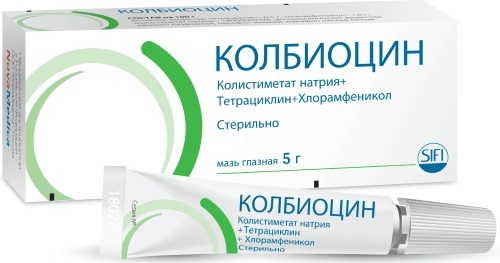
Eye ointment is placed in the lower conjunctival fornix up to 4 times a day. The release of the drug is carried out without a medical prescription from a doctor. The cost of the medicine ranges from 250 rubles.
Tsiprolet
An eye ointment that suppresses bacterial DNA gyrase and disrupts the synthesis and division of harmful microorganisms by destroying their membranes and cell walls.
The description of the drug is given in the table below:
| Compound | Diseases | Locked up to receive | Side effects |
|
|
Children under 2 years of age Hypersensitivity to existing components |
|
The drug is sold freely through pharmacy chains without a medical prescription, and its price starts from 50 rubles.
Modern eye drops are presented on the pharmacological market in a fairly large assortment. The exact selection of drugs with antibiotics for a sick person will always be helped by his attending physician. Also, the medical professional determines the procedure for using the drug, the frequency of its administration and the duration of the course.
It is important to understand that if the ointment does not bring the desired effect after 3 days, then this is a serious signal that the drug must be replaced so that the negative consequences in no way increase from the already existing visual infection organs.
Self-medication is also very dangerous, which, in terms of getting rid of eye diseases, can sometimes negatively affect the final result.
Video about eye ointments
How to use eye ointment:

